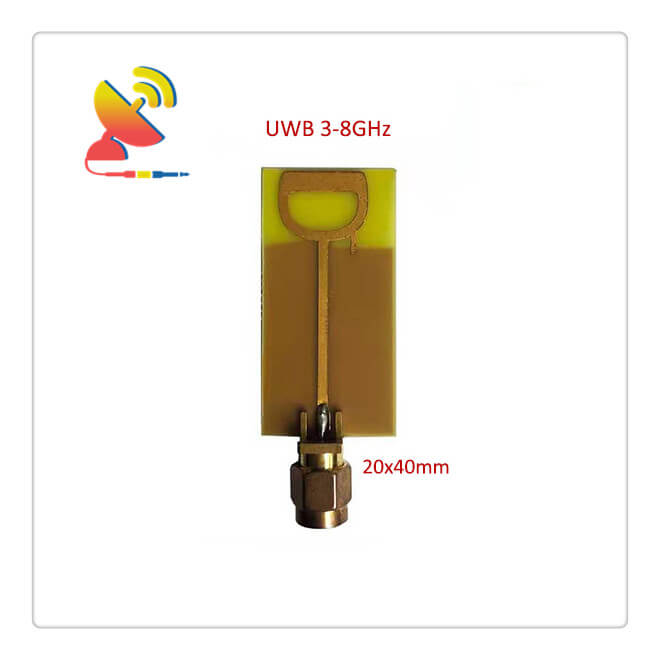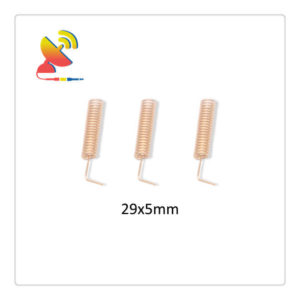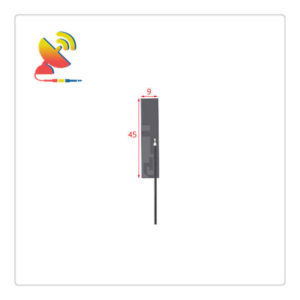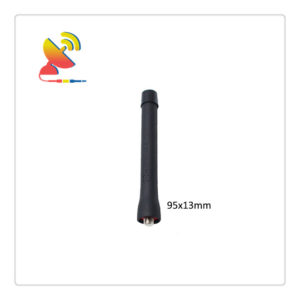Description
What are Telecommunication UWB Antennas For IoT M2M Wireless Applications?
The UWB Antenna CTRF-ANTENNA-PCB-300800-4020-SMA is an embedded antenna Telecommunication Antennas UWB Antennas For IoT M2M Wireless Applications with 3000-8000MHz wideband frequency SMA standard connector supplied by C&T RF Antennas Inc.
Telecommunication Antennas UWB Antennas For IoT M2M Wireless Applications Is Available At C&T RF Antennas Inc.
The leading ultra wide-band antenna indoor UWB antenna outdoor UWB antenna manufacturer in China.
C&T RF Antennas Inc provides internal & external antennas with antenna radio frequencies such as NFC, 169MHz, 230MHz, 315MHz, 433MHz, 868MHz, 915MHz, VHF&UHF, Lora, NB-IoT, ADS-B, GSM, GNSS, GPRS, 1.2 GHz, 1.4 GHz, 1.8 GHz, Wi-Fi 2.4 GHz, 5.8 GHz, Cellular 2G, 3G, 3.5 GHz, 4G LTE, GPS, 5G NR, 6G, etc.
C&T RF Antennas Inc. provides RF antennae with Omni & Directional antenna types such as Dipole Antennas, Whip Antennas, Marine Antennas, Router Antennas, MIMO Antennas, Combo Antennas, PCB Antennas, FPC Antennas, Spring Antennas, Magnetic Antennas, Sector Antennas, Yagi Antennas, and Accessories, etc, for IoT & M2M industries.
Contact us for more details on the UWB Antennas For IoT M2M Wireless Applications such as Telecommunication UWB Antennas For IoT M2M Wireless Applications datasheet, UWB Antennas For IoT M2M Wireless Applications price, and UWB Antennas For IoT M2M Wireless Applications inventory.
UWB Antennas For IoT M2M Wireless Applications Specifications:
UWB Antennas For IoT M2M Wireless Applications Electrical Specifications |
|
| RF Antenna Type | PCB Antenna |
| Model | CTRF-ANTENNA-PCB-300800-4020-SMA |
| Frequency | 3000-8000MHz |
| Gain | 4dBi/6dBi |
| VSWR | ≤3.0 |
| Impedance | 50 Ω |
| Polarization | Vertical/Linear |
| Connector | SMA |
| Lightning Protection | DC-Ground |
UWB Antennas For IoT M2M Wireless Applications Mechanical Specifications |
|
| PCB Board Dimension | 40*20mm |
| Weight | Approx. 10g |
| Material | PCB Board |
| Operation Temperature | -40˚C ~ +75˚C |
| Storage Temperature | -40˚C ~ +80˚C |
| Color | Brown |
| Antenna Design | Dipole Antenna |
| Mounting | Screw |
| Safety Emission and other | RoHS Compliant |
UWB modulation and multiple access technologies
The modulation method refers to the way in which a signal carries information. It not only determines the effectiveness and reliability of the communication system but also affects the signal’s spectrum structure and receiver complexity.
For multiple access technology to solve the problem of multiple users sharing channels, a reasonable multiple access scheme can greatly increase the multi-user capacity while reducing interference between users.
Modulation methods used in UWB systems can be divided into two categories: modulation based on ultra-wideband pulses and orthogonal multi-carrier modulation based on OFDM.
Multiple access technologies include time-hopping multiple access, frequency-hopping multiple access, direct spread code division multiple access, wave division multiple access, etc. In the system design, the modulation mode and multiple access mode can be reasonably combined.
UWB modulation technology
(1) Pulse position modulation
Pulse position modulation (PPM) is a modulation method that uses pulse position to carry data information. According to the number of discrete data symbol states used, it can be divided into binary PPM (2PPM) and multi-system PPM (MPPM).
In this modulation mode, there are 2 or M possible positions for pulses in a pulse repetition period, and the pulse positions correspond to the symbol states one-to-one.
According to the relationship between the distance between adjacent pulse positions and the pulse width, it can be divided into partially overlapping PPM and orthogonal PPM (OPPM).
In partially overlapping PPM, in order to ensure the reliability of system transmission, the adjacent pulse positions are usually selected to be the negative peak points of the pulse autocorrelation function, so as to maximize the Euclidean distance between adjacent symbols.
In OPPM, the pulse position is usually determined at intervals of the pulse width. The receiver uses the correlator to perform coherent detection at the corresponding position.
In view of the complexity and power limitation of the UWB system, in practical applications, the commonly used modulation method is 2PPM or 2OPPM.
The advantage of PPM is that it only needs to control the pulse position according to the data symbol, and does not need to control the pulse amplitude and polarity, which facilitates the realization of modulation and demodulation with lower complexity.
Therefore, PPM is a modulation method widely used in early UWB systems. However, because the PPM signal is unipolar, there are often discrete spectral lines with higher amplitudes in the radiation spectrum. If these spectrum lines are not suppressed, it will be difficult to meet the FCC’s requirements for the radiation spectrum.
(2) Pulse amplitude modulation
Pulse amplitude modulation (PAM) is a number
One of the most commonly used modulation methods in word communication systems. In the UWB system, considering the implementation complexity and power efficiency, it is not advisable to use multi-ary PAM (MPAM).
There are two methods of PAM commonly used in UWB systems: On-Off Keying (OOK) and Binary Phase Shift Keying (BPSK).
The former can use non-coherent detection to reduce the complexity of the receiver, while the latter can better ensure transmission reliability by using coherent detection.
Compared with 2PPM, under the premise of the same radiation power, BPSK can obtain higher transmission reliability, and there is no discrete spectral line in the radiation spectrum.
(3) Waveform modulation
Waveform modulation (PWSK) is a modulation method proposed by combining multiple quadrature waveforms such as Hermite pulses. In this modulation method, M mutually orthogonal equal-energy pulse waveforms are used to carry data information, and each pulse waveform corresponds to an M-ary data symbol.
At the receiving end, M parallel correlators are used for signal reception, and maximum likelihood detection is used to complete data recovery. Since the energy of the various pulses is equal, the transmission efficiency can be improved without increasing the radiation power.
In the case of the same pulse width, a higher symbol transmission rate than MPPM can be achieved.
In the case of the same symbol rate, its power efficiency and reliability are higher than MPAM.
Since this modulation method requires more shaping filters and correlators, its implementation complexity is relatively high. Therefore, it is seldom used in actual systems and is currently limited to theoretical research.






Reviews
There are no reviews yet.